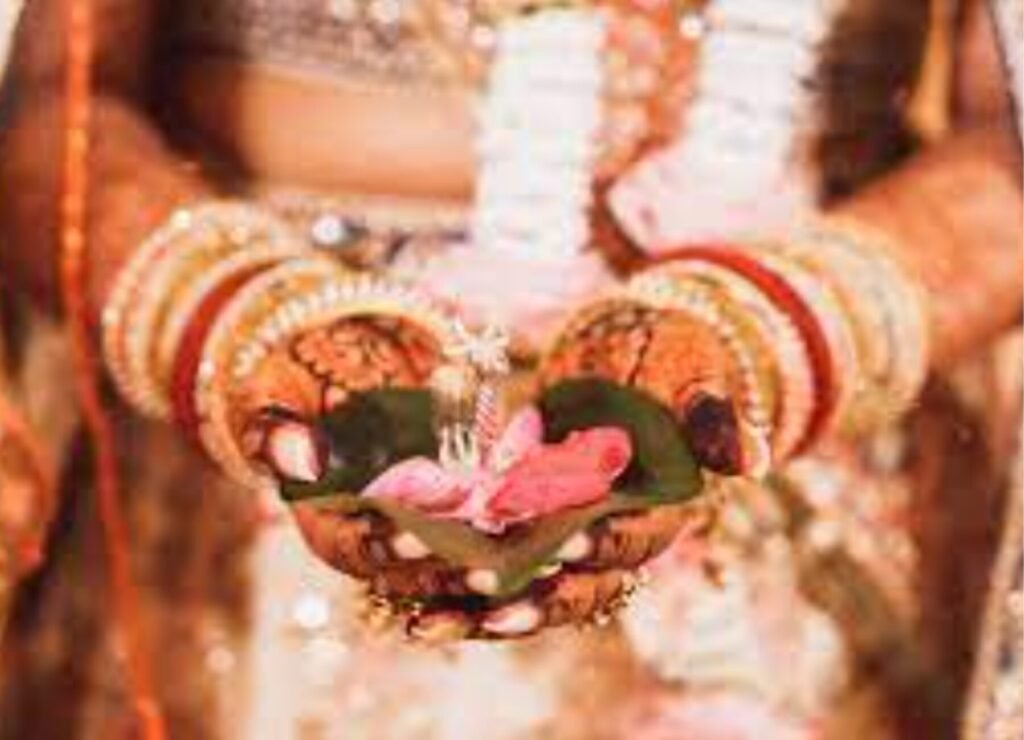A lot of brides these days are opting for gemstone engagement rings as they look unique and unconventional. While diamond has been a classic choice when it comes to engagement rings, there are tones of other stone options that can make you stand out.
As we know, Indian wedding photographers invest a good amount of time and effort in capturing the couple’s engagement rings; you surely want your ring to outshine everything.
As a side note, if you are looking for a trusted wedding photographer in London, then do consider RoyalBindi. They offer one of the best Indian wedding photography packages suitable for all pocket sizes.
Here are the 6 best gemstones for engagement rings.
1. Almandine Garnet
Almandine garnet rings are a popular choice for engagement and cocktail rings. Almandine garnets typically exhibit a deep, rich red colour, ranging from purplish-red to brownish-red. This intense hue is often associated with passion, love, and vitality. The vibrant and intense red colour can add a bold and striking statement to any piece of jewellery. With a hardness of 6.5-7.5 on the Mohs scale, almandine garnets are relatively durable and can withstand daily wear and tear.
2. Emerald Engagement Rings
Emerald is the birthstone of May and it is associated with growth, renewal, and vitality. Emerald engagement rings can represent a new beginning and a commitment to a long-lasting relationship. It derives its name from the Sanskrit language. It is durable, at a 7.5/10 on the Mohs Hardness Scale. It is a Type III gemstone and shows extensive eye-visible inclusions so don’t expect it to be flawless. However, their deep green colour can add a touch of elegance and sophistication to any ring design. Popular emerald engagement ring settings include Solitaire, an emerald with a halo of smaller diamonds, and a three-stone setting. You can choose an emerald engagement ring setting that protects any inclusions. Because of their vibrant colour, emerald gemstones in Asian wedding photography in London.
3.Aquamarine Engagement Rings
Unlike its sister emerald, aquamarine is quite flawless as it is a Grade I gemstone. This shiny, eye-clean, light blue coloured gem symbolises tranquillity, courage, and clarity of thought. It can symbolise a peaceful and harmonious relationship. Like Emerald, it is 7.5/10 on the Mohs Hardness Scale. A well-cut aquamarine will maximise its brilliance and minimise the appearance of inclusions. If you are picking an aquamarine engagement ring, you should look for a clean gem that shows its blue colour. Lighter-coloured aquamarines are less valuable compared to medium or medium-dark blues. Darker colour blues also help to hide when your ring is not clean, whereas dirt and oil can be visible easily on lighter shades of blue.
4.Topaz Engagement Rings
Topaz can be found in a variety of colours, including blue, pink, yellow, orange, and brown. This means there’s a topaz to suit every taste and style. It symbolises wealth and royalty. However, topaz can have various symbolic meanings, depending on the colour. For example, pink topaz is believed to promote love and compassion. It’s also a relatively hard gemstone, ranking 8 on the Mohs scale, making it durable enough for everyday wear. Another great thing about Topaz engagement rings is that they come in massive size crystals. So, it’s a great choice for brides looking for a huge look.
Heads up! Gem experts have created special Topaz colours called “Mystic” Topaz that can look like a rainbow. But these colours are just a coating on the surface, so they might wear off or get chipped. If you’re looking for a ring that changes colour, consider Alexandrite instead. It’s a natural gem that can look like a rainbow and it’s much stronger than Mystic Topaz.
5. Alexandrite & Chrysoberyl Engagement Rings
Alexandrite is a rare colour-changing gemstone that symbolises luck and balance. It changes from green in daylight to red under the indoor lights of a bulb. This phenomenon is known as “alexandrite effect.” Alexandrite is a version of the larger gemstone group, Chrysoberyl. These two are Type II gemstones which means there will be inclusions. However, you can easily find eye-clean pieces which can further be arranged in a way to protect the inclusions, if any. Furthermore, Alexandrite & Chrysoberyl rank 8.5/10 on the hardness scale, which makes them a great choice for daily use. Alexandrite engagement rings often feature a solitaire setting to showcase its colour-changing properties.
6. Sapphire and Ruby Engagement Rings
Ruby was my personal choice for my engagement ring. It was a gorgeous halo surrounded by diamonds. I remember how my Punjabi wedding photographer just could not stop focusing on my hand. Both stones are members of the corundum family, known for their hardness and resistance to scratches. With a harness rating of 9/10, sapphire, and its sister, ruby, are the hardest gemstones available after diamond. While rubies are known for their intense red colour, sapphires come in a variety of colours like blue, pink, yellow, orange, and green. A Sapphire engagement ring symbolises loyalty. A Ruby engagement ring signifies love and passion. The quality of the red colour, known as the “pigeon’s blood red,” is highly prized in rubies. Both sapphire and ruby are Type II gemstones which means they will have some inclusions. But you can look for eye-clean gems which are easily available.


